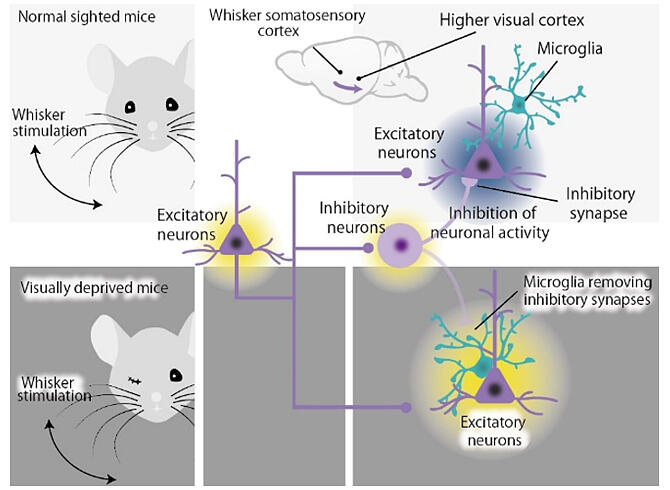We use sensory information from our eyes, hands and ears to interact with the environment. Visual information is processed primarily in the visual cortex, tactile information in the somatosensory cortex and auditory information in the auditory cortex, which is known as the concept of 'functional localization. ' Despite this, when the visual cortex loses visual inputs from the eye, it starts to process auditory and somatosensory information instead. This phenomenon is called 'cross-modal plasticity', resulting in enhanced auditory and tactile sensitivity as if to compensate for the loss of vision. However, the exact mechanism remained unclear.
A research group led by Professor Hiroaki Wake at Nagoya University Graduate School of Medicine, has focused on microglia, a type of glial cell in the brain. Using mice as a model, the group revealed this mechanism through various approaches, including in vivo two-photon imaging, electron microscopy, electrophysiology, and molecular biology.
When mice lose vision shortly after birth, neurons in the higher visual cortex become responsive to tactile stimulation of the whiskers, leading to an improvement in tactile discrimination ability. This phenomenon is caused by microglial production of an enzyme which dissolves extracellular matrix, resulting in the removal of inhibitory synapses and the release of the inhibitory neural circuits that suppress the inherited pathway from the somatosensory cortex to the higher visual cortex.
This research elucidated the brain's compensatory system following visual loss in the higher visual cortex and its regulation by the microglia. This finding may lead to the proposal of a new mechanism for integrating and discrimination of multisensory modalities in the brain.





